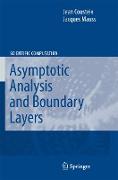Corrective feedback and student reaction. An observational study on communication classrooms
BücherAngebote / Angebote:
Seminar paper from the year 2005 in the subject English Language and Literature Studies - Linguistics, grade: 1, 0, University of Münster (Englisches Seminar), 25 entries in the bibliography, language: English, abstract: CUIUSVIS HOMINIS EST ERRARE, NULLIUS NISI INSIPIENTIS IN ERROR PERSEVERARE.(M.T. Cicero, 44 BC)
Every man can err but only the fool will insist upon it. When Marcus Tullius Cicero made this statement in his first Phillipica in 44 BC he did not know that there would be a time in which errors are no longer perceived as an unwanted, although widely spread, part of human existence.
On the contrary, in 1978, James Hendrickson stated that errors should be accepted as a "natural phenomenon integral to the process of learning a second language."1By this responsibility is passed to the teacher in charge of his students' progress and who has to ensure that the errors which occur are used properly to enhance their individual learning process. In order to support teachers in this respect considerable research has been conducted particularly on the questions: 'Should learner errors be corrected? If so, when should learner errors be corrected? Which learner errors should be corrected? Who should correct learner errors? And how should learner errors be corrected?'
The main focus of this study is how learner errors should be corrected. To contribute to answering this overall question we developed two research questions. Firstly, what is the distribution of different types of corrective feedback in L2 classrooms (communicatively oriented lessons) in England and Germany?, secondly, what is the distribution of student reactions to different types of corrective feedback?
The presentation of our study begins with the description of the database, followed by the analysis of the data according to errors, feedback and student reaction. In the subsequent chapter the results will be presented. In a fourth step the results wi
Folgt in ca. 10 Arbeitstagen




